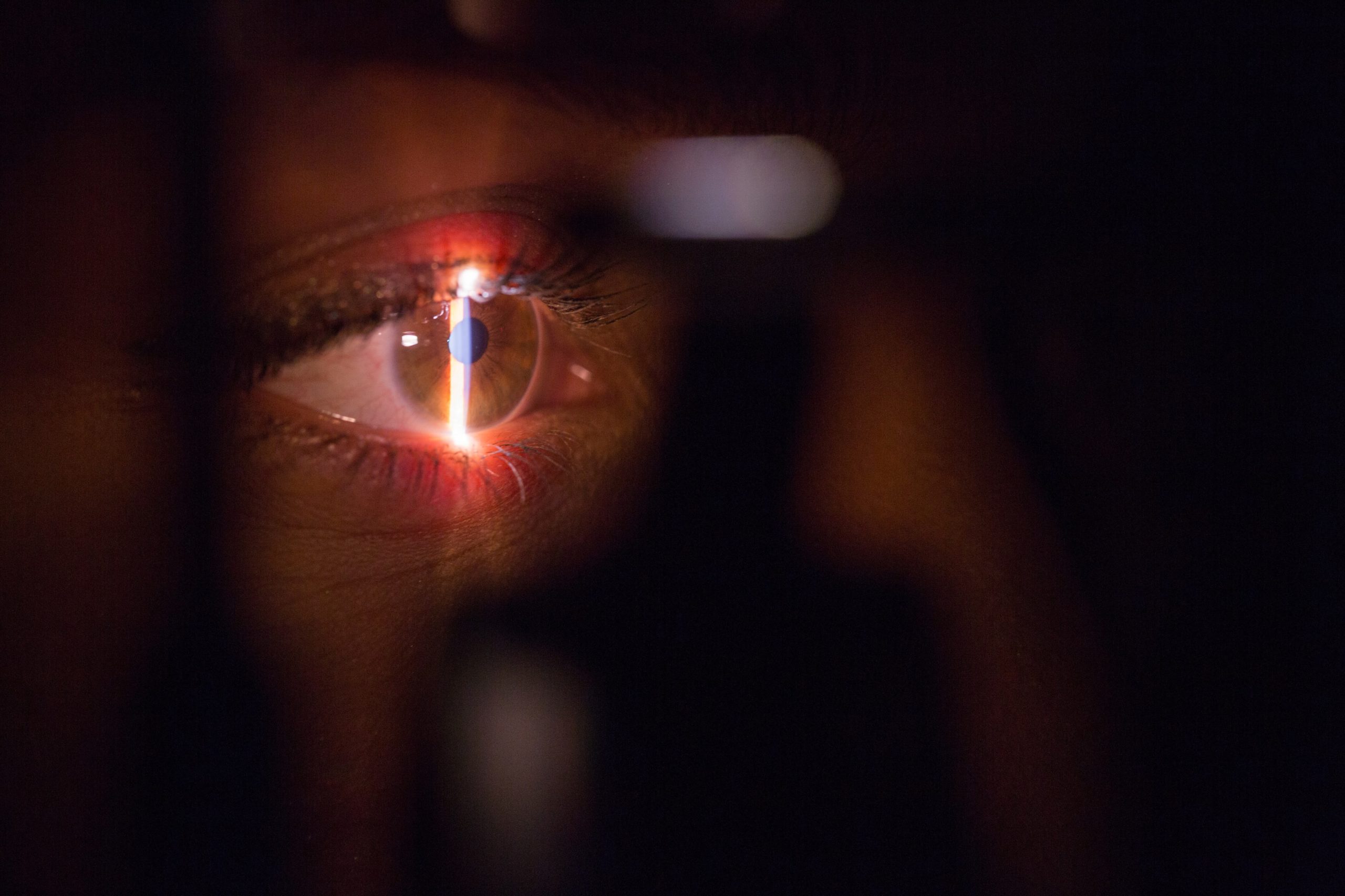Glaucoma
GLAUCOMA
Treatment Options
The human eye produces a fluid which provides nutrition to the inside of the eye. This fluid keeps moving out of the eye through channels in the angle of the eye. In a normal eye, the amount of fluid produced balances out the amount of fluid flowing out of the eye. That keeps the pressure inside the eye (intraocular pressure) stable.
With advancing age, these channels get blocked and the fluid starts collecting in the eye. This results in raised pressure within the eye. The raised pressure then starts hurting the Optic nerve. The damage thus caused to the Optic nerve leading to a decrease in the field of vision and sight is called GLAUCOMA.
SYMPTOMS:
Increased intraocular pressure: This is measured with Goldmann Applantion Tonometer. This instrument is pressed against the patient’s eye to determine the resistance.
Cupping or Atrophy of the Optic Nerve: This is the drying up of the optic nerve as a consequence to the damage suffered because of high pressure in the eye. This is assessed by examination of the Fundus of the eyes.
Visual Field Defects: This is basically the presence of missing areas in the field of sight even though the person may be seeing well otherwise. This condition is measured on an instrument called the Perimeter.
Glaucoma in early stages generally does not show any noticeable symptoms. It is possible that a person suffering from chronic glaucoma to be completely unaware of the disease. Chronic (open angle) glaucoma generally progresses too slowly to get noticed. Some common symptoms of chronic glaucoma could be:
- Inability to adjust the eyes to darkened rooms such as theaters
- Subtle problems in ability to see in night
- Frequent changes (sooner than 6 months) in eyeglass (reading) prescription
- Gradual loss of peripheral vision
In the case of Acute Glaucoma (Angle Closure) which results from rapid increase in the intraocular pressure, there could be severe symptoms. Common symptoms suggesting the presence of acute glaucoma could be:
- Blurred vision
- Seeing rainbow coloured halos around lights in the evenings
- Headaches
- Severe eye pain, facial pain accompanied by blurred vision
- Redness in the eye with sudden loss of vision
- Nausea and vomiting
High-risk Groups to Get Glaucoma:
- People belonging to families with a history of glaucoma
- People suffering from diabetes
- People having high minus or plus numbered glasses
- Everybody over forty years of age
- People suffering from hypertension
- Seeing rainbow coloured halos around lights in the evenings
Anybody who has undergone any kind of eye surgery - People with thyroid gland related ailments
- People with over mature cataracts
- People with any injury to the eye
- People with a history of prolonged use of steroid eye drops
IS GLAUCOMA CURABLE?
Glaucoma cannot be cured. But it can be controlled and further damage to the optic nerve can be slowed down or halted. This control can only be sustained through very disciplined and regular treatment as advised by the ophthalmologist. It is life long process.
WHAT ARE THE TREATMENT OPTIONS FOR GLAUCOMA?
Medication (Eye drops)
The chronic open angle variety glaucoma which has not progressed too far can be controlled by the use of eye drops alone. These drops may have to be put 2-4 times a day. In case of higher intraocular pressure, the patient may have to use more than one type of eye drops.
Laser treatment
Laser treatment is a must for acute type and angle closure variety of glaucoma. Laser treatment is also done to control pressure in open angle type glaucoma. Now a new technique called ELT or Excimer Laser Trabeculotomy is also available which helps in lowering the pressure with the help of a small surgery.
Surgery
In those cases where eye drops and laser treatment do not prove sufficient to control the pressure, surgery is done to create an alternate pathway for the fluid to drain out.
In ELT, practically no anesthesia is required and other tissues like conjunctiva (white portion of the eye) are disturbed. This makes the procedure’s post surgery period very short and safe as compared to normal glaucoma surgery which involves anesthesia and cutting of the conjunctiva.


HOW TO PREVENT GLAUCOMA?
In most cases, there is no prevention for the development of glaucoma. If detected early, further vision loss and blindness may be prevented with treatment. It is always suggested that excessive smoking and alcohol should be avoided. Regular eye checkup especially for people falling under the high-risk groups is a must.
FACTS ABOUT GLAUCOMA:
If you are over forty and/or have a family history of glaucoma, go for regular tonometry (intraocular pressure check-up).
There is no prevention of the development of glaucoma.
Sometimes the symptoms of glaucoma are simply not noticeable.
Glaucoma can silently snatch away your vision.
Timely detection of glaucoma is a must.
Timely treatment of glaucoma may prevent further loss of vision and blindness.
If you Have Any Questions Call Us On +91-22-26718877 / +91-22-26718177
